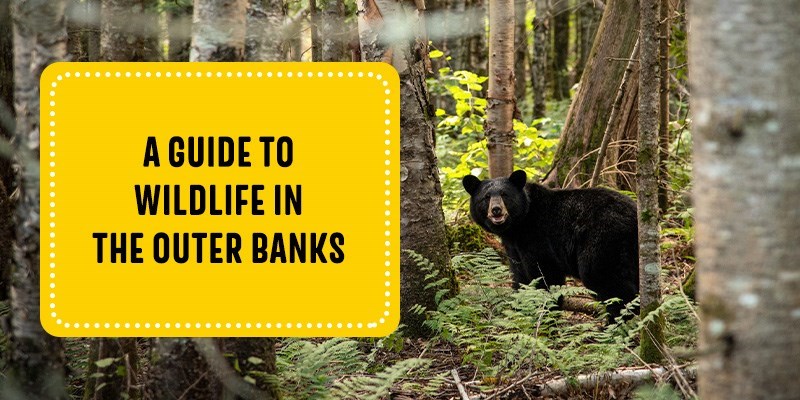Your cart is empty!
Make checkout easy by booking all your reservations at once. Add your sites from different campgrounds into your shopping cart* and then choose checkout.


The Outer Banks (OBX) is home to a wide variety of wildlife thanks to the combination of diverse ecosystems in the area, including marshes, woodlands, ocean waters, maritime forests, sounds, estuaries and more. The Outer Banks also sits along the Atlantic Flyway, making it one of the best places on the East Coast to bird watch.
While it's possible to catch wildlife sightings while exploring the area, one of the best ways to see wildlife on Hatteras Island is at a sanctuary, reserve or refuge. Check out our seasonal wildlife guide to Cape Hatteras to discover what you might see on your next trip to the OBX.
The Outer Banks come alive in the spring as the wildlife emerges from cozy hideaways and returns from trips south.
Spring is an optimal birding season in the Outer Banks since many songbirds, such as purple martins, return from South and Central America's warmer winter months. Many shorebirds also make an appearance in the spring, such as the American avocet and various plovers.
Fish begin migrating north in the spring with the warm coastal waters. If you're fishing around the Outer Banks in the spring, you may encounter:
Many mammals can be seen year-round throughout the Outer Banks, but a couple are particularly common in the spring, including:
Summertime in the OBX is vibrant with all sorts of wildlife, though many can only be seen on reserves such as the Alligator River National Wildlife Refuge.
Bird watchers can catch sight of several kinds of birds in the late summer as they prepare to head south for the winter. You can expect to see types such as:
Summer brings a variety of sea life to the Outer Banks, including:
Summertime is kit-rearing season for the gray and red foxes living in the Outer Banks, so you may see young foxes and their parents exploring. At the Alligator River National Wildlife Refuge, you can go on a safari to see an endangered red wolf population.
Mild weather and wildlife preparing for migration make fall an ideal season to see all the diversity of the Outer Banks.
An animal species guide to the OBX wouldn't be complete without mentioning the thousands of birds that pass through the area as they migrate south for the winter. A few of the types you might see include:
Fall is also a great time for fishing since the weather and water stay warm through November. Near the shore, you may see king mackerel, bluefish and false albacore. Offshore fishing may lead you to some white and blue marlin, mahi, wahoo, giant bluefin, yellowfin tuna and blackfin tuna.
Rabbits, opossums, squirrels, raccoons, white-tailed deer, muskrats and nutria are common year-round in the Outer Banks, but they can be easy to spot on warm fall days and evenings.
While many birds and animals have left the Outer Banks for warmer weather, there is still an abundance of wildlife to watch and enjoy in the wintertime.
The Outer Banks is always a great place for birdwatching, but it is particularly exciting in the winter with the thousands of birds that make the area home for the season. You'll be able to see waterfowl such as:
If you love to fish, the Outer Banks has a wide variety to offer throughout the winter, including:
Harp, gray, hooded and harbor seals love the Outer Bank's cool inshore waters, so you may see them as they sunbathe on rocks, sandbars and even the beach. Humpback whales may sometimes appear offshore as they migrate in late winter and early spring.
You can explore the rich biodiversity of the Outer Banks when you stay at Cape Hatteras / Outer Banks KOA Resort. With the Atlantic Ocean on one side and Pamlico Sound on the other, you'll have endless opportunities for outdoor adventure and wildlife observation. Book your stay today to see the natural beauty of the Outer Banks for yourself!
That doesn't mean this area has to always be empty. When you start reviewing camping options, your history will display here to help compare sites and find the best stay. You will be able to share your stay information with friends or family and save it for a later time if you have a KOA Account.
Make checkout easy by booking all your reservations at once. Add your sites from different campgrounds into your shopping cart* and then choose checkout.